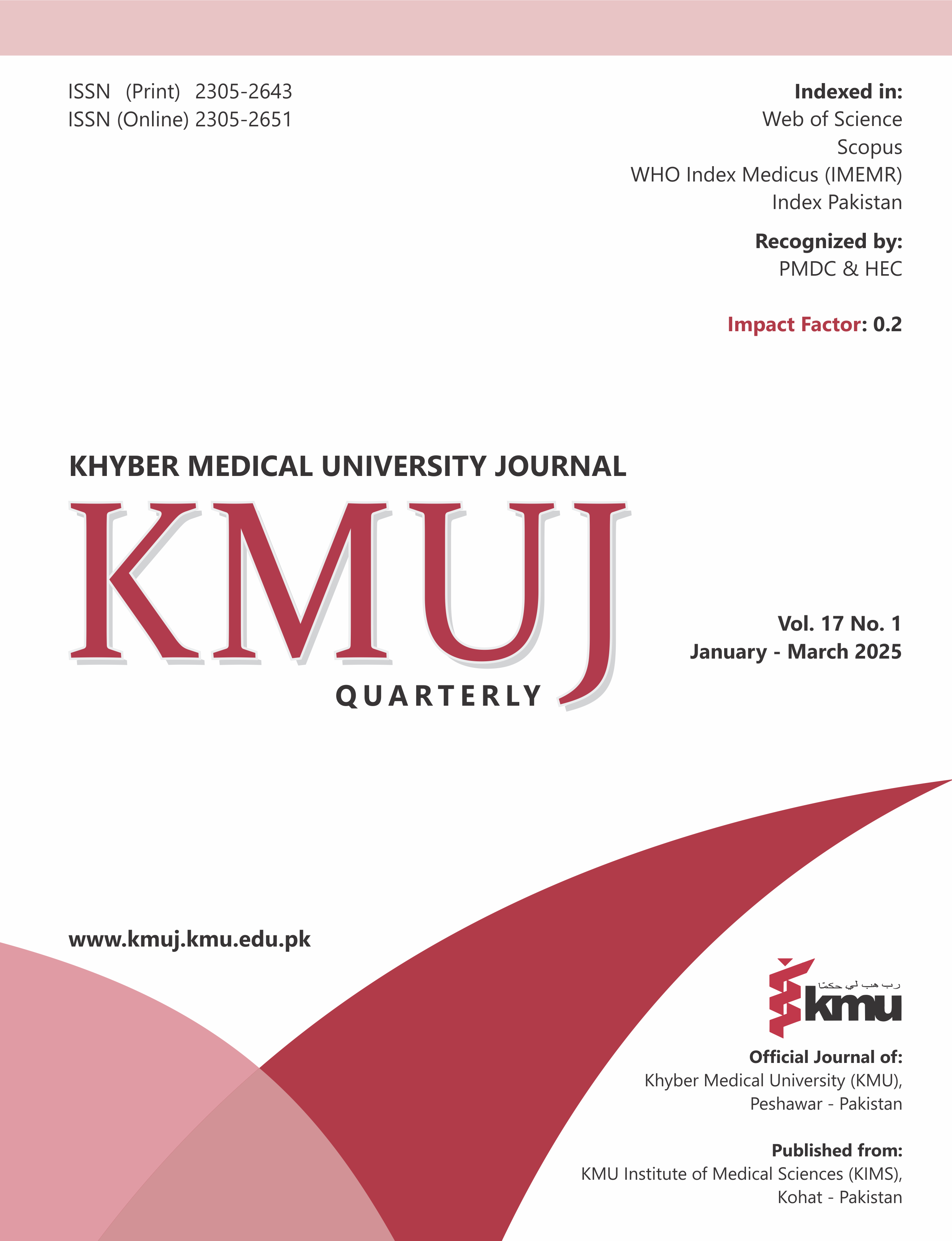Beyond words: facets of non-verbal communication used in undergraduate medical and dental education classroom
Main Article Content
Abstract
Objective: To measure and evaluate the different facets of non-verbal communication among educators in undergraduate medical and dental classrooms.
Methods: This cross-sectional analytical study was conducted from April 2023–February 2024 at Shifa College of Dentistry and Shifa College of Medicine, Islamabad-Pakistan. A stratified random sample of 242 students from Bachelor of Dental Surgery (BDS) and Bachelor of Medicine, Bachelor of Surgery (MBBS) programs was targeted, with 229 respondents (response rate 94.6%). Data were collected using a structured, pre-validated questionnaire comprising five subscales—proxemics, kinesics, oculesics, chronemics, and vocalics—rated on a 5-point Likert scale. Data were analyzed using SPSS (v26.0).
Results: Of 229 students, 150 (34.5%) were MBBS and 79 (35.5%) were BDS students; 149 (65%) were male and 80 (35%) were female students. Chronemics received the highest rating (median=4.67), followed by vocalics (median=4.33), while proxemics and oculesics were rated lower (median=4.00). Younger students, female students, and MBBS participants showed a greater preference for kinesics. Gender comparisons indicated that female students rated both kinesics and oculesics higher than their male counterparts, albeit with small effect sizes, and significant variation in kinesics was noted among different academic years (p=0.049).
Conclusion: This study demonstrated the significant impact of non-verbal communication in medical and dental education classrooms. Chronemics, vocalics, and kinesics emerged as the preferred facet. Younger students, female students, and MBBS students showed a greater preference for kinesics. These findings emphasize the need for educators to tailor their non-verbal communication to meet the diverse needs of students in dynamic learning environments.
Article Details

This work is licensed under a Creative Commons Attribution 4.0 International License.
Work published in KMUJ is licensed under a
Creative Commons Attribution 4.0 License
Authors are permitted and encouraged to post their work online (e.g., in institutional repositories or on their website) prior to and during the submission process, as it can lead to productive exchanges, as well as earlier and greater citation of published work.
(e.g., in institutional repositories or on their website) prior to and during the submission process, as it can lead to productive exchanges, as well as earlier and greater citation of published work.
References
1. Bunglowala A, Bunglowala A. Non-verbal communication: An integral part of teaching learning process. Int J Res Advent Technol 2015;1(1):371-5.
2. Bambaeeroo F, Shokrpour N. The impact of the teachers’ non-verbal communication on success in teaching. J Adv Med Educ Prof 2017;5(2):51-9.
3. Gulzar MA, Asmari AR Al. Effects of Teachers’s Non-verbal Communication on the Learnability of the Adult Saudi EFL Learners: A Case Study. Eur J Sci Res 2013;96(4):553-71. 4. Šerić M. The Relationship Between Teacher Non-verbal Communication and Student Behavior: A Cross-National Perspective. J Commun Inq 2021;45(4):383-410. https://doi.org/10.1177/0196859920977125
5. Sutiyatno S. The Effect of Teacher’s Verbal Communication and Non-verbal Communication on Students’ English Achievement. J Lang Teach Res 2018;9(2):430-7.
6. Bunglowala A, Bunglowala A. Non-verbal communication : An integral part of teaching learning process. Int J Res Advent Technol 2015;(1):371-5.
7. Aziz A, Majeed F, Malik SM. Medical Educator’s Non-verbal Behavior and its Impact on Students and Educational Environment. J Univ Med Dent Coll 2021;12(3):152-61.
8. Rawat D. Importance of communication in teaching learning process. Sch Res J Interdiscip Stud 2016;4(26):3058-63.
9. Rahmat NH, Roslan MA, Hussein B, Hussein B, Othman NA, Ramli NFM. The Influence of Kinesics and Vocalic in ESL Oral Presentation among Undergraduates. Glob J Soc Sci Stud 2019;5(1):1-13. https://doi.org/10.20448/807.5.1.1.13
10. Park SG, Park KH. Correlation between non-verbal communication and objective structured clinical examination score in medical students. Korean J Med Educ 2018;30(3):199.
11. Wang X, Cheng Z. Cross-Sectional Studies: Strengths, Weaknesses, and Recommendations. Chest. 2020;158(1):S65-S71. https://doi.org/10.1016/j.chest.2020.03.012
12. Amecian Pyscological Association. Ethical principals of psychologists and code of conduct. Am Pyschological Assoc 2017;1-21. https://doi.org/10.1525/california/9780520234277.003.0001
13. Yusoff MSB. ABC of content validation and content validity index calculation. Resource 2019;11(2):49-54.
14. Gilbert GE, Prion S. Making sense of methods and measurement: Lawshe’s content validity index. Clin Simul Nurs 2016;12(12):530-1.
15. Park H. Reliability using Cronbach alpha in sample survey. Korean J Appl Stat 2021;34(1):1-8.
16. Fesharaki F. Non-verbal communication of pharmacists during counseling leading to patient satisfaction: evidence from Iranian retail market. Atl J Commun 2019;27(1):62-73.
17. Rahman MH, Alqahtani DA. Effectiveness of Kinesics among Saudi undergraduate EFL Students: How do Paralinguistics Impact the Pedagogical Practices in an ESOL Classroom? J Lang Cult Educ 2022;10(3):1-13.
18. Nemati A. Attitude of Foreign Language Learners on Non-verbal Communication and Privacy in Communicative Classes. Vis J Lang Foreign Lang Learn 2019;8(1):11-25.
19. Lamichhane YR. Non-verbal Skills: Unavoidable in Communication. J Bus Hosp 2016;1:91-8. https://doi.org/10.3126/repos.v1i0.16046
20. Wahyuni A. The Power of Verbal and Non-verbal Communication in Learning. In: In 1st International Conference on Intellectuals’ Global Responsibility. 2018. pp. 80-3. https://doi.org/10.2991/icigr-17.2018.19
